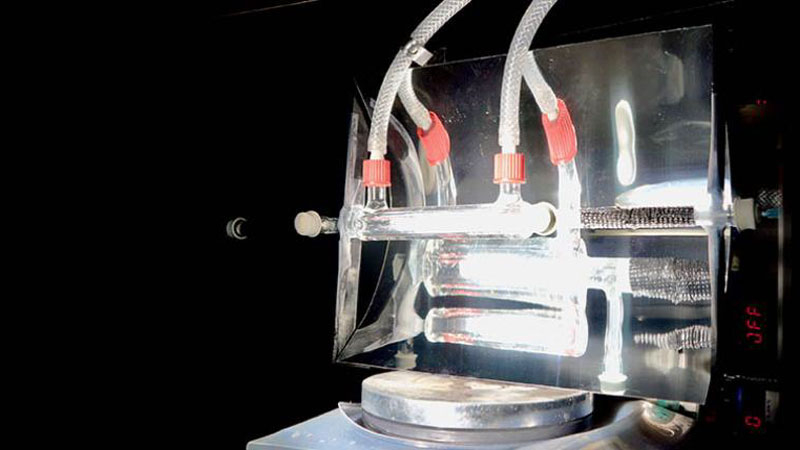Scientists at the University of Cambridge in the UK have created a facility to capture carbon dioxide from the air and then produce synthetic fuel using solar energy. Ideally, such a facility could be supplied to people in remote locations, where they could synthesize their own fuel without relying on supplies. This would be clean, fossil-free production and the basis for a circular economy.

Image source: University of Cambridge
Direct capture of carbon dioxide from the air could reduce the negative climate impact of greenhouse gas emissions from industry, transport, agriculture and society as a whole. Today, the dominant approach in this area is to capture and store CO2 in natural reservoirs in the Earth. Only recently, the UK government pledged to allocate £22 billion for this purpose. However, this will not solve the problem of reducing emissions and is a kind of indulgence to continue emitting CO2.
Researchers from the University of Cambridge propose a radical solution to the problem. Since the authorities, environmentalists and investors intend to reduce the level of carbon dioxide in the atmosphere by capturing it, it makes sense to immediately make something useful out of it, rather than hoping that liquefied or gaseous CO2 will be reliably retained underground. From this gas, with the help of catalysts and temperature conditions, it is possible to produce many chemical compounds for industrial production and even synthetic fuel. Isn’t it a dream to take something unnecessary and even harmful and use it for good without harming nature?
«What if, instead of pumping carbon dioxide underground, we made something useful out of it? say the authors of a paper published in the journal Nature Energy. “CO2 is a harmful greenhouse gas, but it can also be turned into useful chemicals without contributing to global warming.”
The synthetic fuel reactor developed and tested by scientists absorbs carbon dioxide from the air at night and starts working with the first rays of the sun. Using water, heating of individual components by sun rays, and also using solar energy in its pure form and in the form of electricity, as well as thanks to a powder semiconductor catalyst, the reactor starts producing synthetic fuel. By changing the catalyst and modes, it is possible to produce raw materials for the chemical and pharmacological industries. There are many applications for this.
«Instead of continuing to extract and burn fossil fuels to produce the products we rely on, we can take all the CO2 we need directly from the air and reuse it, the scientists believe. “We can build a circular, sustainable economy if we have the political will to do so.”
The technology is expected to be brought to market with the support of Cambridge Enterprise, the university’s commercialisation arm. The research was partly supported by UK Research and Innovation (UKRI), the European Research Council, the Royal Academy of Engineering and the Cambridge Trust.